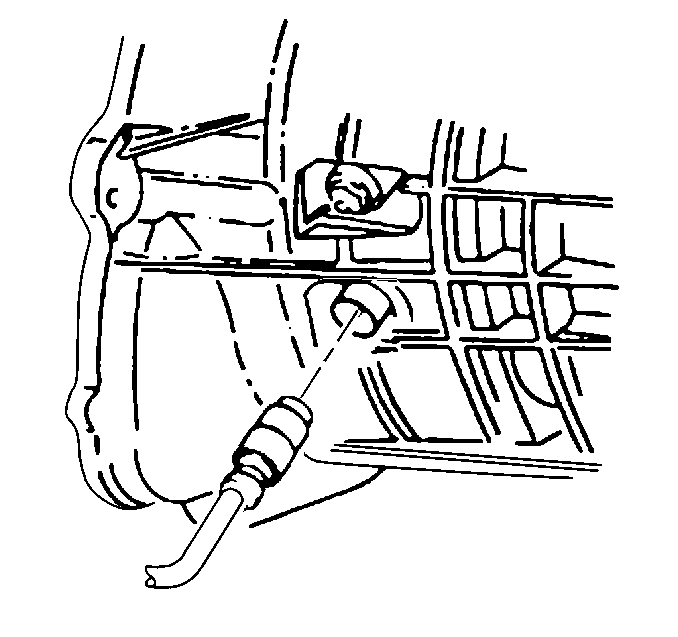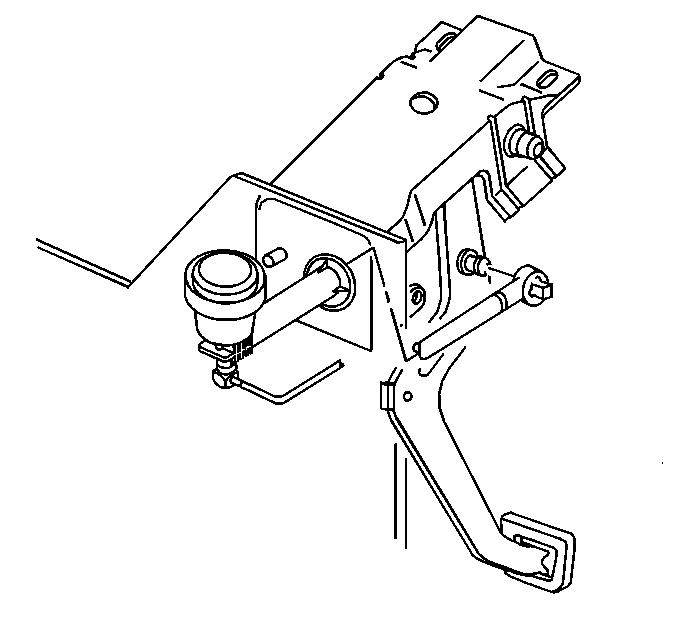Hydraulic Clutch Fluid
Notice: Do not use mineral or paraffin-base oil in the clutch hydraulic system. These fluids may damage the rubber parts in the cylinders.
When refilling the system or adding fluid after service, use GM Delco Supreme No. II® Brake Fluid, or an equivalent that meets DOT 3 specifications.
Hydraulic Clutch


The clutch release system consists of the following components:
| • | A master cylinder with a reservoir |
| • | A switch |
| • | An actuator cylinder connected to hydraulic tubing |
With depression of the clutch pedal, the clutch master cylinder becomes pressurized from the force of the push rod into the master cylinder. This forces hydraulic fluid into the tubing from the master cylinder to the concentric slave cylinder. The slave cylinder then engages by pushing the release bearing into the diaphram spring and releasing the clutch.
A hole in the cowl panel accommodates the master cylinder. A quick connect coupling helps route the hydraulic tubing. The concentric slave cylinder is inside the transmission and on the input bearing retainer. The hydraulic control system can be replaced without having to gain access to the clutch system internal components, simply engage the quick connect coupling mounted through the transmission housing.
There are automatic clutch system adjustments. No mechanical changes in the linkage or clutch position are necessary. As the clutch wears, the fluid level in the master cylinder reservoir rises as a result of less fluid in the hydraulic system. A new system will have a fluid level at the very top of the reservoir.
An electrical switch on the push rod has two functions: One function is a clutch interlock, assuring that the engine does not start unless the clutch pedal is engaged (positioned to the floor). The second function is to cut off the cruise-control system (if so equipped) when the clutch pedal is engaged.
